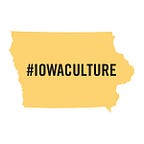Behind the Scenes: First in the Nation
By Kay Coats, State Historical Museum of Iowa Collections Coordinator
Iowa began setting the stage for the presidential election when the first caucus was held in 1972. With the next Iowa Caucus in February of 2016 fast approaching, the State Historical Museum of Iowa is launching its newest exhibit, First in the Nation: Shaping Presidential Politics Since 1972, to highlight the history of Iowa’s role as the first in the nation state. The exhibit features more than 160 objects from the museum’s collection. Here’s a step-by-step peek at what it took to get the exhibit ready.
1. Deciding the theme and scope of the exhibit
Of course, the theme is the Iowa Caucus, but what about the caucus do we want to feature specifically? Since the exhibit is housed in one of the smaller rotating galleries it was important to decide what story to tell and how to accomplish it. We decided to look at different milestones associated with the caucus. For example, we explored what it’s like to declare candidacy, visit the state, what happens the night of caucus, and more. Content experts and curators gathered information to tell the story of the caucus and investigate who has been involved in the event over the years.
2. Selecting the objects to help tell the story
As you can probably guess, different objects tell different stories. For example, signs and buttons are very grassroots focused, allowing voters to show their support for a particular candidate. On the other hand, brochures and fliers and postcards help presidential hopefuls get information to voters. You’ll find different kinds of objects all over the exhibit, but one thing that hasn’t changed is the use of red, white, and blue along with the patriotic imagery.
3. Recording what objects will be moved from storage to the exhibit gallery
This job might seem tedious, but it’s one of the most important parts of putting any exhibit together. Keeping a record helps the museum team track the collection and helps those designing the exhibit know what they need to incorporate. Before artifacts are installed, each one is checked to ensure it’s safely marked with a unique identification number, has a photograph in the museum’s database, and is on the exhibit list. Not only does this help organize the creation of the exhibit, but it also helps keep things organized when it’s time to return the objects to storage.
4. Installation
The installation is where all the pieces come together. Artifacts are laid out with the content in the form of panels and labels. Together, the artifacts and content present the story of the Iowa Caucus. Things are tweaked to make sure all the information is correct, the exhibit is visually appealing, and objects are secure.
Once we’ve completed these four steps, the exhibit is ready to be viewed by the public. This particular exhibit took five months to develop and it will be open until April 3, 2016. Visit the Historical Museum of Iowa to see it all!
